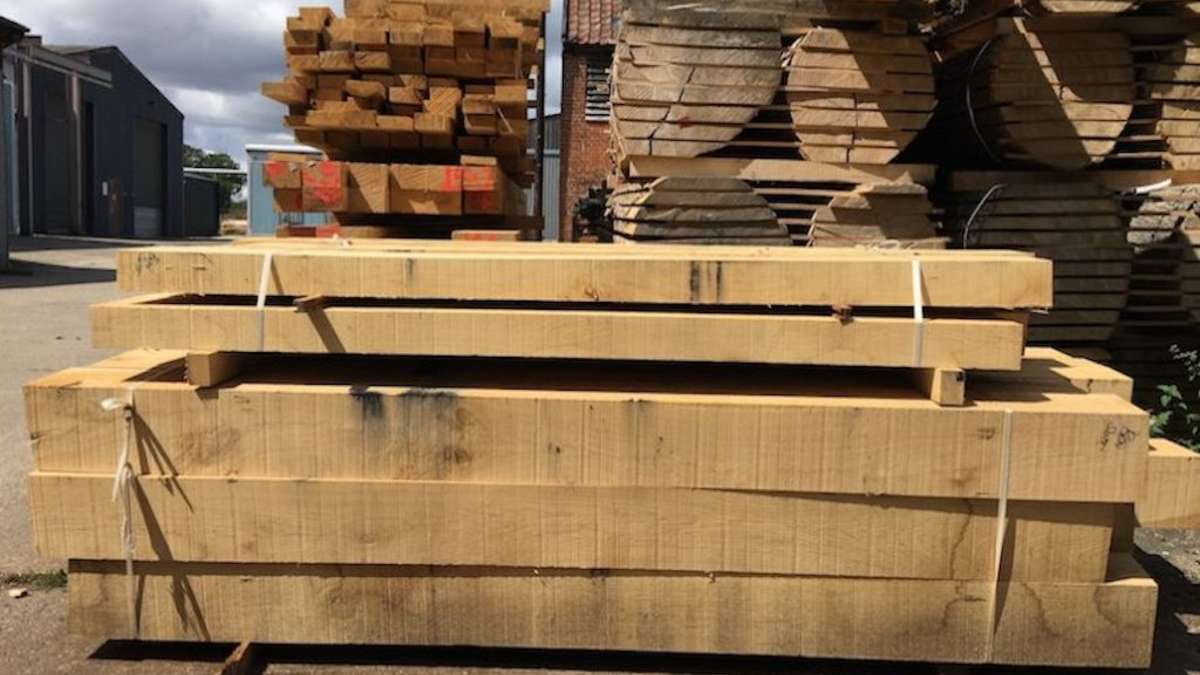
| Wood is an attractive, versatile and durable building material, hence its continuing popularity through the ages – even today, when so many alternatives are available. More than this, so long as it is sourced responsibly it is also an inherently environmentally friendly material.
An infinitely renewable resource Unlike many other natural resources, wood is entirely renewable and is therefore a fully sustainable building material. Plastics require oil as a raw material, which was formed over millions of years and will never be replaced at the rate we use it. Metals not only have to be mined from limited resources but then have to be smelted at a high energy cost. Even bricks have to be fired in a kiln and so have a high ‘embodied’ energy. Wood suffers from none of these problems. When it is harvested from managed woodland, every tree that is cut down is replaced by at least one more. This is not solely an environmental decision. It secures long-term supplies of the slow-growing hard woods that are needed for many products, including timber frames for construction, furniture, boats and solid wood floor boards. In this way companies can maintain both environmentally and financially sustainable businesses. Carbon sink All plants filter carbon dioxide from the atmosphere and convert it into nutrients through the process of photosynthesis. This means that every tree that is cut down represents many years of scrubbing carbon dioxide from the air and turning it into wood, releasing oxygen as a by-product. By definition, trees are carbon-neutral: even burning one releases no more CO2 into the atmosphere than it removed during its growth. In fact, when wood is used as a building material it serves to lock carbon dioxide away – a natural form of carbon sequester or CCS (carbon capture and storage) that power stations are exploring to limit their emissions. Thus wood has the capacity to be a zero-carbon and even carbon-negative material. Sustainable European hardwoods The hardwoods that make the best and most attractive building materials, such as oak, ash and walnut, grow to maturity over many decades. Soft woods like pine grow far faster, but are less suitable for hard-wearing applications since their grain structure makes them less durable and more prone to damage. Because hardwoods take such a long time to grow, unscrupulous companies may procure them from unsustainable sources – including illegal logging. This is one of the reasons that reputable companies will source their hard woods from Europe, where their growth and replacement can be properly monitored. The Forestry Stewardship Council (FSC) promotes sustainable forestry and their standard guarantees that the wood has been sourced responsibly. Additionally, there is a carbon cost to transporting any product, and when wood is sourced from the US, Canada or South America, this factor starts to offset the benefits of using an otherwise sustainable material. Manufacturing requirements Ideally, the wood will be as minimally treated and processed as possible. The chemicals and energy cost of turning wood into chipboard, plywood and other products negates the environmental benefits. Typically, hardwoods are sawn into planks and then air-dried for up to several years, depending on the thickness of the boards. (They may also be kiln-dried, though of course this has a carbon cost.) This minimal processing is why solid wood products are greener than reconstituted and composite ones – as well as being more attractive. The relatively low carbon cost of logging, transportation and processing can be offset by planting more trees. Utilisation and recycling Wood is never wasted, since any offcuts can always be used, right down to small chips and sawdust. Some types of fine paper, including tissue and printing paper, use hardwood pulp, for example. Finally, at the end of its useful lifespan wood can always be recycled. It is biodegradable and so can be disposed of safely. It can even be used as a biofuel to generate electricity or to heat a space directly – a more environmentally friendly option than burning coal, oil or natural gas. |

